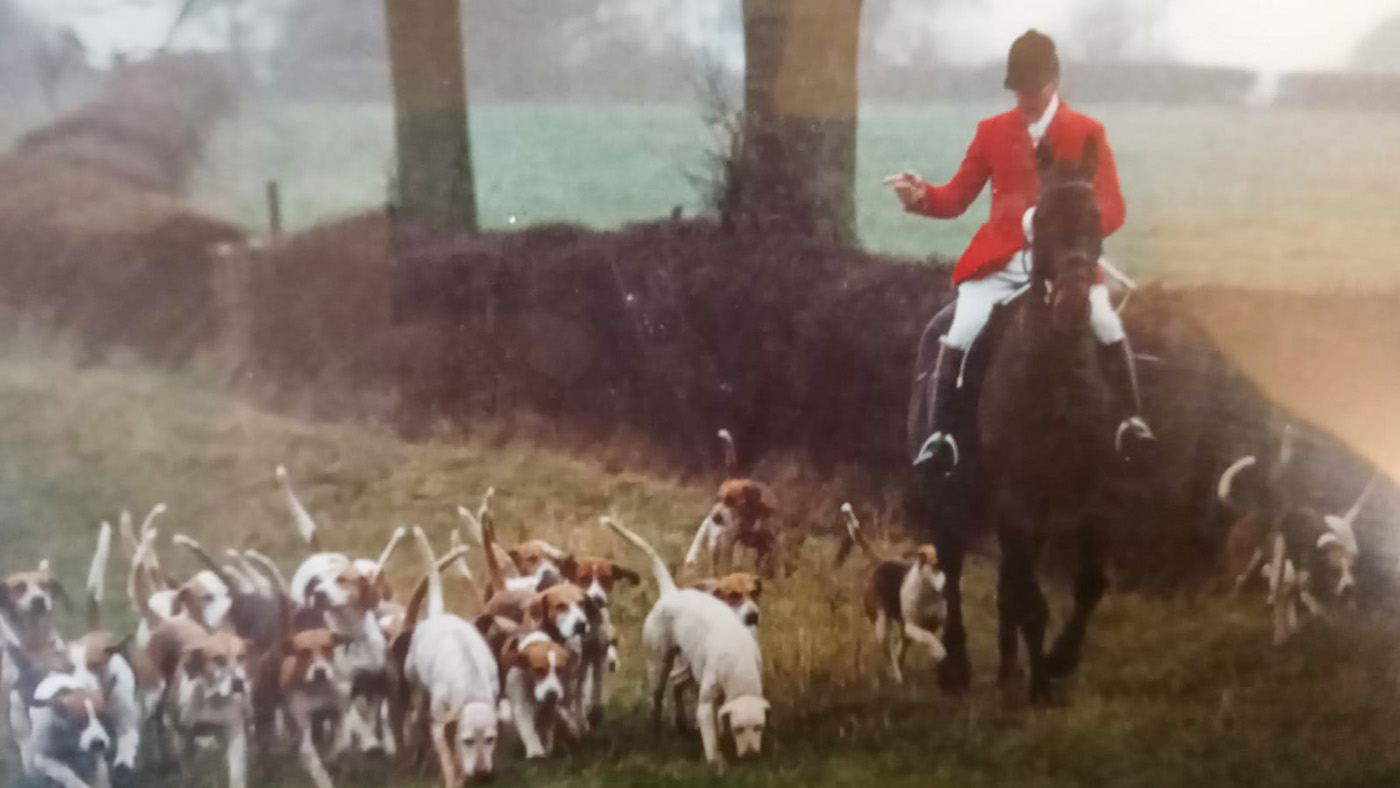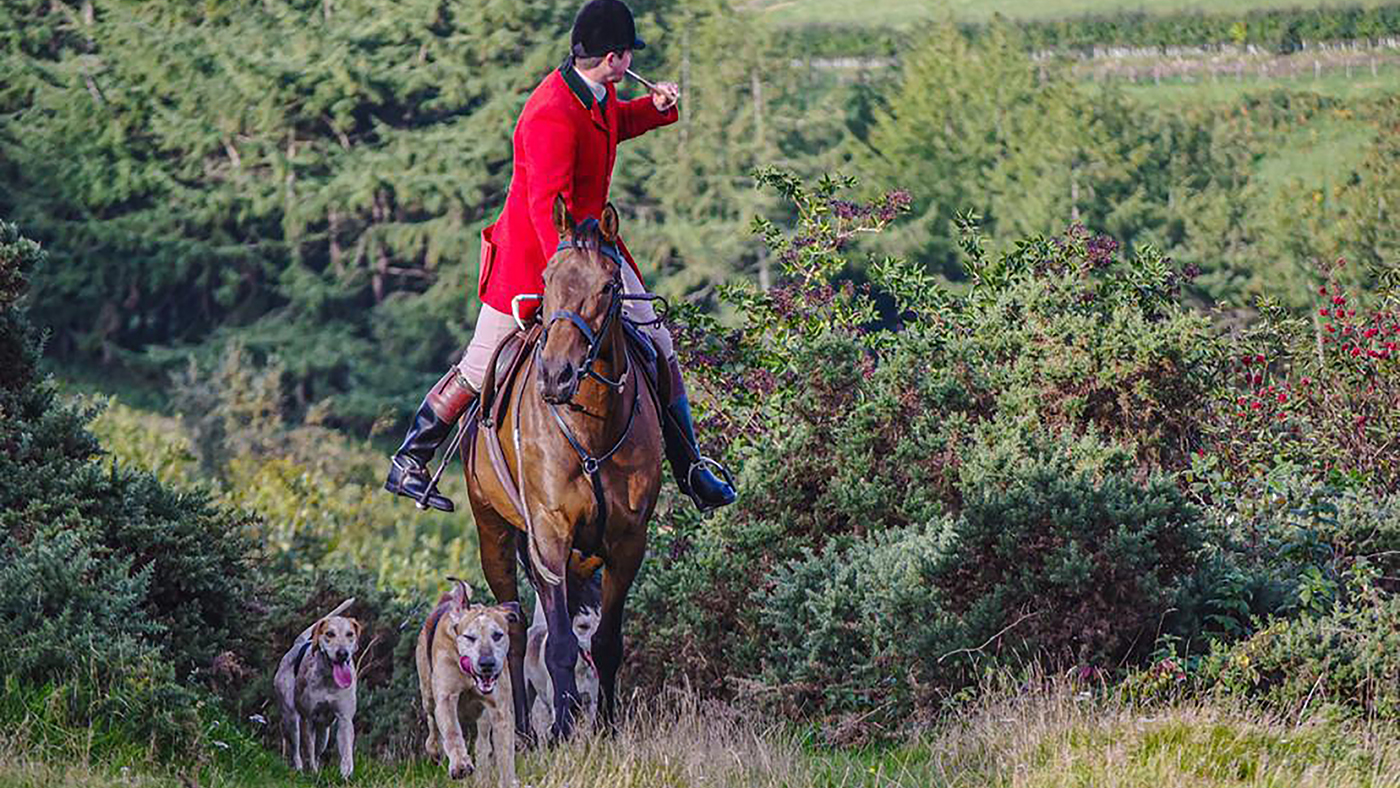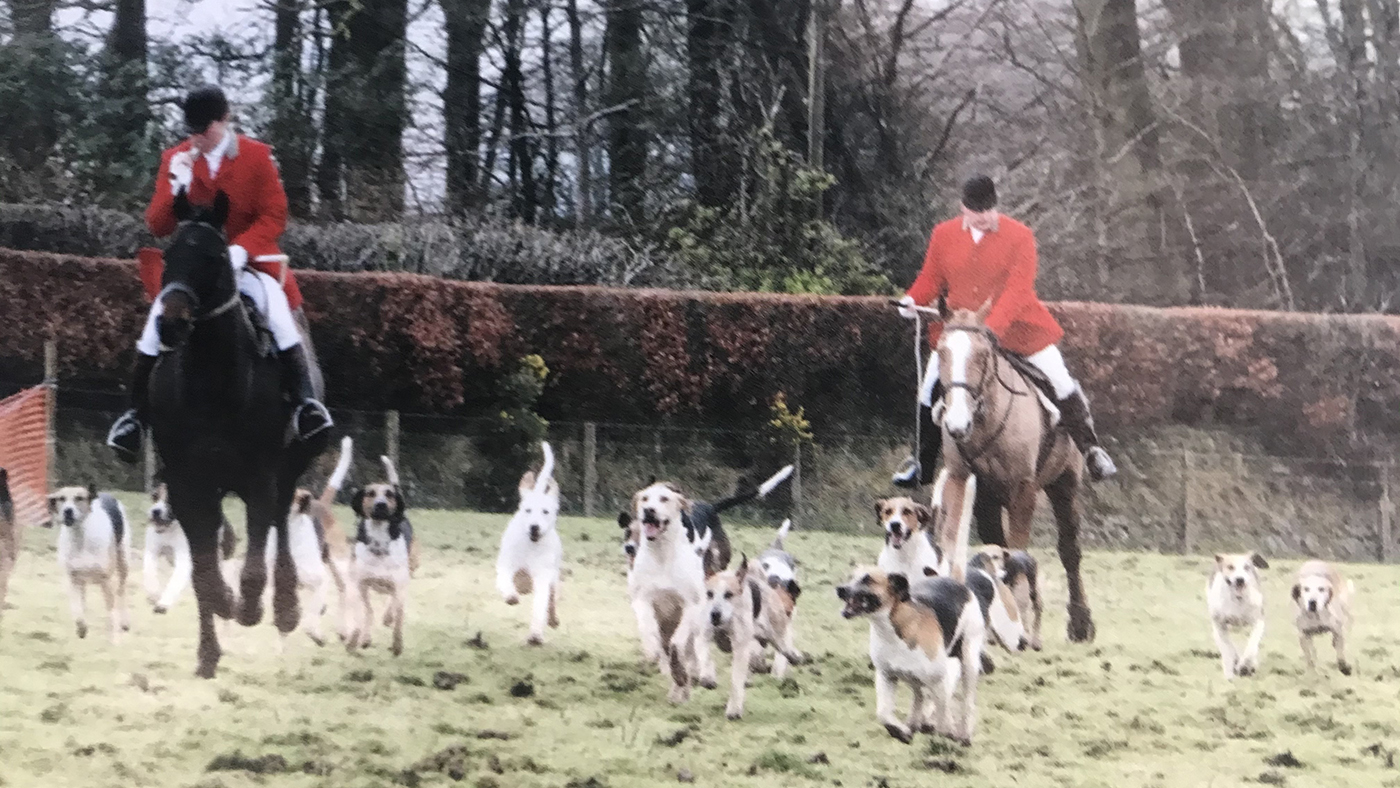Can horses that have excelled in one discipline switch to hunting hounds, with all that job entails? Tessa Waugh finds some who have swapped jobs very successfully
HUNTSMEN’S horses are the alphas of the hunter world. They tend to be tough and independent and share with their rider an intense love of what they do. While some make their way into the job because they are deemed unrideable elsewhere, others have never done anything else.
Perhaps rarer are the ones who enjoyed success as competition horses beforehand. Showjumpers, racehorses, point-to-pointers, eventers and show horses have all taken to the task with aplomb, as these huntsmen can report.
Guy Landau, master and huntsman of the Meynell and South Staffs, has hunted many competition horses over the years, but it is John Dunlop’s champion show hunter Finn McCool who really stands out – as outstanding on the hunting field as he was in the show ring.
Guy was showing him in the late noughties and the pair won every major championship, finally bowing out in 2009 having been unbeaten for two seasons. Like Robert Oliver, who hunted many of his show horses, it was a natural progression for Guy to take Finn hunting. He helped whip-in off him at the South and West Wilts and took him with him when he went to hunt the West Somerset Vale in 2010.

Guy notes that taking the job of huntsman’s horse is a big adjustment for a horse, even when they have hunted before.
“It took Finn a day or two to get used to the hounds,” he says. “They have to get used to them rushing up behind them, swinging off their tails.”
After that, it was plain sailing.
“Without question he had the biggest engine of any animal I have ever hunted,” enthuses Guy. “It didn’t matter what you did in the day, he would go home as fresh as he started. The longest day we had, we put hounds in the lorry at 9.15pm having met at 11am and he was still going. It demonstrates to me how important conformation is, because he was as correct a show horse as you would ever come across. I couldn’t fault him, and I’m harder on my own horses than other people’s.”
Guy can’t think of an obstacle they didn’t take on together.
“I could hunt him down in the vale, where he’d jump everything, and on the Quantocks which was moorland. He was the most naturally gifted horse I have ever had.”
Education and confidence are key
GUY’S predecessor at the Meynell, Olympic showjumper David Barker, who hunted the pack between 1986 and 1999, often hunted eventers.
David’s wife, Elaine, who took over from her husband as huntsman of the Staffordshire Moorland, recalls: “There were hardly any hunt horses at the Meynell – 70% of them were sent to us to educate or because they had stopped going across country.”

David Barker often hunted eventers, such as the very successful Pedro The Cruel
Lucinda Green often sent horses the Barkers’ way, including future Badminton and Burghley winner Tamarillo as a five-year-old and Tamarillo’s sister.
“We would start the newcomers off by putting them in the paddock with the hounds. Tamarillo had to learn to get his feet mucky and that sort of thing, but we didn’t have to school him for jumping,” remembers Elaine.
People often say showjumpers make the best hunters, and this is something Gareth Watchman, master of the Berwickshire, can attest to. He was a professional showjumper before he became a huntsman and, as an amateur whipper-in, only hunted horses that did both; showjumping them through the summer and hunting them in winter, often selling them on having put them through their paces at both.
On introducing showjumpers to hunting, he says: “It’s all about letting them gain confidence with the natural obstacles and natural going. When they take to the hounds, everything else becomes secondary and they want to follow them. You get halfway through the season’s hunting and they start to lose all the things you want in a showjumper but want as a hunter. They get attitude.”
Gareth bought Annie as a seven-year-old in the Netherlands, where she had been jumping 1.30m, but at the end of her first season she ended up with a big knee due to a blackthorn. Annie came sound again but the knee never went down, so Gareth kept her and has carried on hunting her for nine seasons.
“Some of my best days’ hunting have been because of Annie. She has jumped a lot of decent hedges, but her speciality is tall uprights and wire fences – just aim for a post. You always know when you leave the floor that you’re safe,” he says.
“He would give you the world”
WHEN jockey Ryan Mania was hunting the Berwickshire hounds, a retired chaser called Mr Moonshine came his way via trainer Sue Smith. Ryan knew all about this horse, rated 155 at the peak of his career, because he had ridden him in some big races including the Grand National in 2014, coming home 15th.
“It wasn’t the best result,” says Ryan, who had won the race the previous year on Auroras Encore, “but we had the thrill of crossing the Melling Road in front. Moonshine was tough and genuine and jumped for fun. A very talented animal who always gave you everything.”
Despite Mr Moonshine’s obvious talents, Ryan wasn’t sure how he would take to the hounds.
“He was quite sharp with his back feet,” he recalls, and the first day he took him out was not particularly relaxing.
“I hadn’t had a chance to take him on hound exercise,” says Ryan. “I remember thinking, ‘This could go horribly wrong’. It turned out that he liked the hounds, which was odd because I wouldn’t have trusted him with my spaniel running around.”

Ryan Mania riding Grand National runner Mr Moonshine.
Moonshine didn’t like standing around at meets, so Ryan learnt to avoid the bigger lawn meets with him. When it came to jumping, he didn’t school him.
“When we came to little hunt fences, I just pointed him at them and gave it a go. In his first season, hounds were running and we came across this real big 4½ft wooden gate out of the covert. He absolutely winged it. If you were running and his blood was up, he would give you the world.”
As a huntsman, Adrian Dangar enjoyed riding various ex-racehorses and point-to-pointers, including a horse trained by Nicky Henderson which had won at Cheltenham. However, nothing matched a horse called Waggie, whom he hunted for eight seasons.
Adrian was hunting the Spooner’s and West Dartmoor, his first pack, when he first sat on her. On that day, a local point-to-point trainer called George Turner had offered to mount Adrian for the day, in return for getting as many of his horses qualified as possible.
The first horse was fresh from Ascot sales, a beautifully turned-out grey whose lack of fitness got the better of him after an hour. He was replaced with a horse called Bishop’s Rick, who came to the meet in a racing saddle and stirrups that Adrian couldn’t let down.
Noting Adrian’s difficulties, a hunt supporter called Jo Miall offered him her horse to ride, and rushed home to get her. The 15.1hh came straight from the field with a hairy coat covered in mud, together with the dubious recommendation that Jo had struggled to hold her on the days that she had brought her out.
“We went to a place called Crapstone and found in a field of kale, had a fantastic hunt and jumped three five-bar gates,” remembers Adrian, who bought Waggie for £800 with the proceeds of the skin money.
Although not officially a competition horse, Adrian says Waggie had won every Midnight Steeplechase going.
Looking back, he says: “She was tiny and I looked like I was riding a guinea pig, but she was my horse of a lifetime.”
Earning their keep
MIKE WEIR, former master of the Dartmoor for 22 seasons and latterly master of the West Somerset Vale, enjoyed plenty of crossover between his dual interests of hunting and point-to-pointing. Phar Afield, known as Fiddler, was one of the best pointers/hunters he owned.
“He cost £460 at Ascot in the early noughties and went on to win five races for us,” says Mike.
Mike’s preparation was simple: “If we had something good enough to point-to-point,” he says, “once we finished hunting they would do three weeks’ fast work and then they could run. That way they had earned their keep all winter and then we had a bonus in the spring. We hunted Fiddler for three seasons and he did two seasons’ racing.”
In all the horses he had over the years, there were only two that didn’t make it because they kicked the hounds. He had the odd part-bred Irish Draught, but on Dartmoor it was a thoroughbred he needed.
“They might be blowing at the top of the hill, but give them two minutes, on they go again. Half-breds take half a day to get back on form again.”

Claire Bellamy riding German-bred thoroughbred Anko, who had raced on the Flat
When Claire Bellamy, master of the Lauderdale, whipped-in to Mike, she too discovered that thoroughbreds were matchless when it came to crossing their country.
“Comparing a sport horse to a thoroughbred is like comparing a Jeep to a Rolls-Royce,” she says.
When she was hunting the Spooner’s and West Dartmoor, trainer Jimmy Frost supplied her with a steady stream of horses.
“Jimmy used to ring up,” she recalls, “and say, ‘I’ve got one here that will look really pretty at a meet with a red coat on.’”
One of her best was a German-bred thoroughbred called Anko, who had won eight races on the Flat. The pair completed 12 seasons together.
It is testament to the versatility of horses that they can perform at more than one discipline with such aplomb.
.
This exclusive feature can also be read in this week’s Horse & Hound magazine, on sale Thursday 1 July
You may also be interested in…

Meet the hunting farrier who is heading to his third Olympics *H&H Plus*

Munnings painting celebrating lifelong hunting friendship sells for £105,000
The painting by the great Sir Alfred Munnings was given as a gift to a lifelong friend, who he met

Hounds of a lifetime: the best ones huntsmen have been privileged to work alongside *H&H Plus*

How leading hunting figures learnt to ride *H&H Plus*
Rory Knight Bruce finds out how some of hunting’s leading lights learnt their skills in the saddle

10 hunting people I wish I’d known *H&H Plus*
